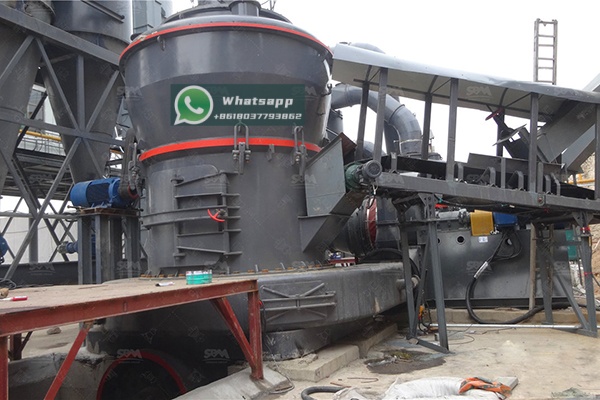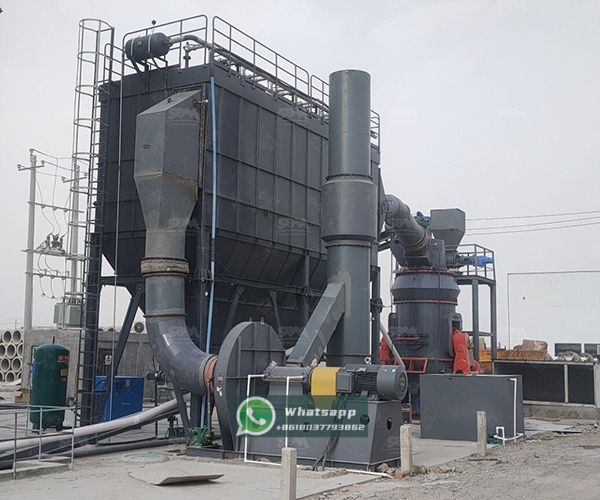In the realm of industrial mineral processing and powder production, large vertical mills have emerged as cornerstone equipment for achieving efficient grinding, drying, and classification in a single, compact unit. Their dominance is attributed to superior energy efficiency, smaller footprint, and integrated processing capabilities compared to traditional ball mills. However, the high performance and longevity of these sophisticated machines are inextricably linked to one critical, yet often underestimated, aspect: the foundation. A robust and properly engineered foundation is not merely a support structure; it is the bedrock upon which mill stability, operational precision, and equipment lifespan are built.
The foundation for a large vertical mill serves multiple vital functions beyond simply bearing the machine’s weight. It must:
Designing a foundation for a large vertical mill is a multidisciplinary task involving geotechnical, structural, and mechanical engineering.
The first and most crucial step is a comprehensive geotechnical survey of the proposed site. This investigation determines the soil’s bearing capacity, shear strength, and compaction characteristics. For sites with weak or unstable soil, deep foundations such as piles or caissons are necessary to transfer the load to a more competent stratum. The allowable bearing pressure and potential for settlement directly influence the foundation’s dimensions and reinforcement.

The foundation block is typically a massive reinforced concrete structure. Its design is not static; it must be analyzed for dynamic response. Finite Element Analysis (FEA) is employed to model the foundation’s behavior under operational loads, including the mill’s operating speed and its harmonics. The goal is to ensure that the foundation’s natural frequency does not coincide with the mill’s excitation frequencies, thereby avoiding resonance, which can amplify vibrations to destructive levels.
The concrete used must have high compressive strength, typically in the range of 30-40 MPa, and low shrinkage. Reinforcement steel, with precise placement as per design drawings, is critical to handle tensile and shear stresses. Construction must be meticulous, ensuring proper curing to prevent thermal and shrinkage cracks. Embedment plates and anchor bolts for securing the mill must be set with extreme precision, as even minor deviations can complicate installation and affect alignment.
A stable foundation is the launchpad for the mill’s sophisticated internal process. Large vertical mills, such as the advanced models from Shanghai Zenith Machinery, integrate multiple functions. Material is fed onto the center of a rotating grinding table. Centrifugal force moves it under heavy grinding rollers, where it is pulverized. Simultaneously, hot gas injected into the mill dries the material, and the resulting fine powder is air-swept to a classifier for separation. Oversize particles fall back for regrinding, while the finished product is collected in a bag filter. This entire process, from crushing to conveying, relies on the stable, vibration-free platform provided by the foundation.

When selecting equipment, it is paramount to choose a manufacturer that understands the holistic nature of mill installation, including foundation requirements. Shanghai Zenith Machinery Co., Ltd., a leader in ore grinding equipment, offers robust vertical mill solutions engineered for stability and high performance. Two of their standout products exemplify the technological advancements in this field.
The LM Vertical Grinding Mill is a workhorse designed for mineral processing. It integrates five functions—crushing, grinding, powder selection, drying, and material conveying—into a single machine. Its compact design reduces the overall footprint, which in turn can simplify foundation demands. However, its high capacity and integrated operation necessitate a foundation designed to handle significant dynamic loads and maintain precise alignment of its grinding table and roller system.
Below are the technical parameters for the mineral grinding series of the LM Vertical Mill, demonstrating its capacity range and power requirements—key data for foundation design.
| Model | Plate diameter (mm) | Capacity (t/h) | Output fineness (μm) | Max feed size (mm) | Main motor (kW) |
|---|---|---|---|---|---|
| LM130K | 1300 | 10-28 | 170-40 | <38 | 200 |
| LM190K | 1900 | 23-68 | 170-40 | <45 | 500 |
| LM280K | 2800 | 50-170 | 170-45 | <50 | 1250 |
For applications requiring ultra-fine powders, the LUM Ultrafine Vertical Mill is an excellent choice. It builds upon the vertical mill concept with enhanced features for finer grinding and more precise classification. It integrates grinding, drying, classifying, and transportation in a minimal space. The LUM series is designed for high content of end-fines and features intelligent control systems. The dynamic forces from its high-speed classifier and grinding mechanism require a foundation with excellent damping characteristics to ensure product fineness and equipment reliability.
| Model | Main machine power (kW) | Capacity (t/h) | Size distribution D97 (μm) |
|---|---|---|---|
| LUM1525 | 220-250 | 1.6-11.5 | 5-30 |
| LUM1632 | 280-315 | 2.0-13.5 | 5-30 |
| LUM1836 | 355-400 | 2.3-15 | 5-30 |
The foundation for a large vertical mill is a critical investment that pays dividends throughout the equipment’s operational life. Neglecting its design and construction can lead to chronic operational issues, unplanned downtime, and premature equipment failure. By partnering with experienced equipment manufacturers like Shanghai Zenith Machinery and engaging qualified engineering teams to design a site-specific, dynamically analyzed foundation, plant operators can ensure their vertical mills operate at peak efficiency, producing high-quality powder reliably for years to come. The mill and its foundation are not separate entities but a single, integrated system where stability below enables excellence above.
